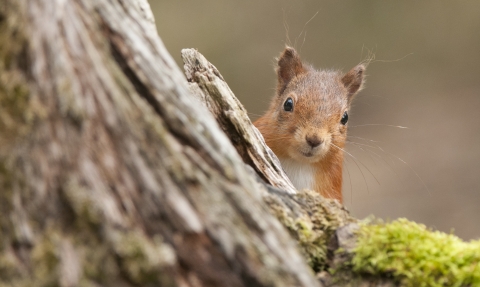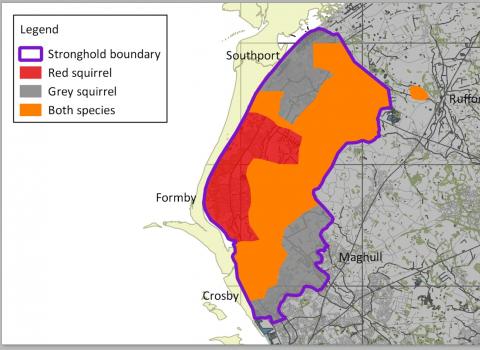
(c) Sam Rowley Photography
Red Squirrels
What are they?
With their distinctive russet fur, tufted ears and twitching tail, a red squirrel is a captivating sight. Autumn is a great time to see them as they forage nuts to cache for the long winter months. The introduction of the grey squirrel from North America caused our once common native red squirrel to go on the retreat, disappearing from great swathes of the country. The total UK population is now thought to be as low as 120,000 animals, of which more than three quarters are found in Scotland.

Saving the last red
The red squirrel population in Merseyside and Lancashire has been steadily increasing since the devastating impact of the squirrel pox virus outbreak in 2008 which saw 80% of the population wiped out.
Thanks to the perseverance and dedication of our volunteers and project officers, the population recovered quickly and has now increased to almost 90% of the pre-pox numbers.
It is our aim that red squirrels will once again become a common sight throughout North Merseyside, West Lancashire and beyond. As a partner in the new Red Squirrels United project, funded by EU LIFE and Heritage Lottery Fund, and with the help of our dedicated volunteers this is now a real possibility.
Where can I see them?
The introduction of the grey squirrel from North America caused our native red squirrel numbers to plummet, perhaps partly due to competition from the larger American, but also due to the ‘squirrel pox’ virus carried by the greys, which can cause entire populations of red squirrel to die out. Scotland and Ireland are where the red squirrel now has its main strongholds. In England, red squirrels only survive on the Isle of Wight and Brownsea Island, where there are no greys, on the Formby coast, and in the extensive pine forests of Northumberland and the Lake District.
Freshfield Dune Heath
Red squirrels are frequently sighted in the woodland.
What to look for
Red Squirrels are most often found in coniferous woods, feasting on hazelnuts by cracking the shell in half. You may also find pine cones that have been nibbled, leaving what looks like an apple core behind. Squirrels make a rough nest, called a 'drey', of twigs, leaves and strips of bark in the fork of a branch, high in the tree canopy. Like most wild animals, red squirrels tend to be shy of people, so keep as quiet as you can. A good first place to look is on bird feeders! Red squirrels are just as keen on peanuts as their grey cousins, and they may come to feeders if they are around.





